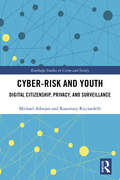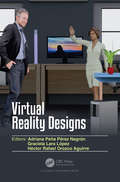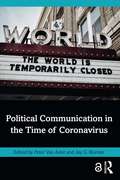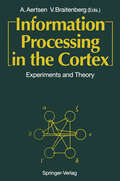- Table View
- List View
OpenStack Cloud Application Development
by Scott Adkins John Belamaric Vincent Giersch Denys Makogon Jason E. RobinsonLeverage the power of OpenStack to develop scalable applications with no vendor lock-in OpenStack Cloud Application Development is a fast-paced, professional book for OpenStack developers, delivering comprehensive guidance without wasting time on development fundamentals. Written by experts in the OpenStack community from Infoblox, Gigaspaces, GoDaddy, and Comcast, this book shows you how to work effectively and efficiently within the OpenStack platform to develop large, scalable applications without worrying about underlying hardware. Follow along with an OpenStack build that illustrates how and where each technology comes into play, as you learn expert tips and best practices that make your product stronger. Coverage includes OpenStack service primitives, networking within the OpenStack Ecosystem, deployment of Virtualized Network Functions for Enterprises, containers, data protection, and much more. If you need to get on board quickly, this professional book is your ideal roadmap to OpenStack development. Understand all aspects of OpenStack technologies Follow an example build to drill down into critical elements Learn the OpenStack best practices and insider tips Leverage the full capability of IaaS at a professional pace OpenStack is supported by dozens of major technology companies, compatible with Amazon Web Services, and can be used alongside or on top of VMWare vSphere and other similar technologies. It frees developers from the confines of hardware and vendor lock-in while providing a reliable, fast, and easy platform for developing scalable cloud applications. OpenStack Cloud Application Development is an expert-led guide to getting the most out of OpenStack, designed specifically for the professional developer.
IBM Cognos Business Intelligence
by Dustin AdkisonWritten as a practical guide, this book will show you how to manage your reporting environment using IBM Cognos 10 and make the most out of BI tools within your business - taking a hands-on approach to stimulate learning and develop your understanding. If you are an IBM Cognos or Business Intelligence developer or consultant, have a basic knowledge of Cognos 10 BI and a good level of understanding of Cognos 8 then this book is for you.
Primality Testing and Abelian Varieties Over Finite Fields (Lecture Notes in Mathematics #1512)
by Leonard M. Adleman Ming-Deh A. HuangFrom Gauss to G|del, mathematicians have sought an efficient algorithm to distinguish prime numbers from composite numbers. This book presents a random polynomial time algorithm for the problem. The methods used are from arithmetic algebraic geometry, algebraic number theory and analyticnumber theory. In particular, the theory of two dimensional Abelian varieties over finite fields is developed. The book will be of interest to both researchers and graduate students in number theory and theoretical computer science.
Graph-Theoretic Concepts in Computer Science: 46th International Workshop, WG 2020, Leeds, UK, June 24–26, 2020, Revised Selected Papers (Lecture Notes in Computer Science #12301)
by Isolde Adler Haiko MüllerThis book constitutes the revised papers of the 46th International Workshop on Graph-Theoretic Concepts in Computer Science, WG 2020, held in Leeds, UK, in June 2020. The workshop was held virtually due to the COVID-19 pandemic. The 32 full papers presented in this volume were carefully reviewed and selected from 94 submissions. They cover a wide range of areas, aiming to present emerging research results and to identify and explore directions of future research of concepts on graph theory and how they can be applied to various areas in computer science.
Usability: Turning Technologies into Tools
by Paul S. Adler Terry A. WinogradAs more and more equipment incorporates advanced technologies, usability -- the ability of equipment to take advantage of users' skills and thereby to function effectively in the broad range of real work situations -- is becoming an essential component of equipment design. Usability: Turning Technologies into Tools collects six essays that herald a fundamental shift in the way industry and researchers think about usability. In this new, broader definition, usability no longer means safeguarding against human error, but rather enabling human beings to learn, to use, and to adapt the equipment to satisfy better the demands and contingencies of their work. Following an introduction that develops some core concepts of usability, the subsequent chapters: -- describe the role of usability in guiding one of Xerox's largest strategic initiatives -- analyze a Monsanto chemical plant where a study of worker's conversational patterns contributed to the design of a more effective system of controls -- present an empirical study of equipment design practices in U.S. industry which contrasts technology-centered and skill-based design approaches -- summarize recent Scandinavian experiences with user participation in design, with specific reference to the DEMOS and UTOPIA projects -- analyze European experiences that suggest five key criteria for effective human-centered design of advanced manufacturing technology --offer an insightful discussion of the powerful, often hidden human and organizational resources that conventional design processes overlook. Today, three quarters of all advanced technology implementations in manufacturing fail to achieve their performance goals because of inadequate usability. By viewing the human being as a mechanistic system component, and not a particularly reliable one, the traditional "human factors" model of usability virtually ensures that the uniquely human qualities -- experience, adaptation, innovation -- will be neglected, and therefore that new technologies will realize little of their true potential. Usability: Turning Technologies into Tools answers the need for better usability criteria and more effective design and usability assurance processes. In so doing, it leads the way to making a new, broader concept of usability central to design. Its chapters will be of interest to managers and professionals in computer systems, manufacturing engineering, industrial design, and human factors, as well as researchers in disciplines such as computer science, engineering, design studies, sociology, organizational behavior and human resource management, industrial relations, education, and business strategy.
Dependable Computing - EDCC 2021 Workshops: DREAMS, DSOGRI, SERENE 2021, Munich, Germany, September 13, 2021, Proceedings (Communications in Computer and Information Science #1462)
by Rasmus Adler Amel Bennaceur Simon Burton Amleto Di Salle Nicola Nostro Rasmus Løvenstein Olsen Selma Saidi Philipp Schleiss Daniel Schneider Hans-Peter SchwefelThis book constitutes refereed proceedings of the Workshops of the 17th European Dependable Computing Conference, EDCC: Second Worskhop on Dynamic Risk Management for Autonomous Systems, DREAMS 2021, Third Workshop on Dependable Solutions for Intelligent Electricity Distribution Grids, DSOGRI 2021, 13th Workshop on Software Engineering for Resilient Systems, SERENE 2021, held in September 2021. Due to the COVID-19 pandemic the workshops were held virtually. The 14 workshop papers presented were thoroughly reviewed and selected from 22 submissions. The workshop papers complement the main conference topics by addressing dependability or security issues in specic application domains or by focussing in specialized topics, such as system resilience.
The Essential Persona Lifecycle: Your Guide to Building and Using Personas
by Tamara Adlin John PruittThe Essential Persona Lifecycle: Your Guide to Building and Using Personas offers a practical guide to the creation and use of personas, which can help product designers, their team, and their organization become more user focused. This book is for people who just need to know what to do and what order to do it in. It is completely focused on practical tools and methods, without much explanation on why the particular tool or method is the right one. The book discusses the five phases of persona lifecycle: Family planning — Basic ideas and a few tools that will help one get organizedConception and gestation — Step-by-step instructions to move from assumptions to completed personasBirth and maturation — Strategic techniques to get the right information about ones personas out to ones your teammates at the right timeAdulthood — Specific tools that will ensure that ones personas are used by the right people at the right times and in the right ways during the product development cycleLifetime achievement and retirement — Basic ideas and a few tools to you measure the success of the persona effort and prepare for the next onePractical and immediately applicable how-to reference guide for building and using personas – from planning, creating, launching, evaluating, and determining ROIInvaluable guide that gives you a quick reference for incorporating personas into a product development processFeatures all the essential how-to material from its parent book, The Persona Lifecycle, as a quick, at your fingertips companion
The Persona Lifecycle: Keeping People in Mind Throughout Product Design (Interactive Technologies)
by Tamara Adlin John PruittThe Persona Lifecycle is a field guide exclusively focused on interaction design's most popular new technique. The Persona Lifecycle addresses the "how" of creating effective personas and using those personas to design products that people love. It doesn’t just describe the value of personas; it offers detailed techniques and tools related to planning, creating, communicating, and using personas to create great product designs. Moreover, it provides rich examples, samples, and illustrations to imitate and model. Perhaps most importantly, it positions personas not as a panacea, but as a method used to complement other user-centered design (UCD) techniques including scenario-based design, cognitive walkthroughs and user testing. The authors developed the Persona Lifecycle model to communicate the value and practical application of personas to product design and development professionals. This book explores the complete lifecycle of personas, to guide the designer at each stage of product development. It includes a running case study with rich examples and samples that demonstrate how personas can be used in building a product end-to-end. It also presents recommended best practices in techniques, tools, and innovative methods and contains hundreds of relevant stories, commentary, opinions, and case studies from user experience professionals across a variety of domains and industries. This book will be a valuable resource for UCD professionals, including usability practitioners, interaction designers, technical writers, and program managers; programmers/developers who act as the interaction designers for software; and those professionals who work with developers and designers.Features* Presentation and discussion of the complete lifecycle of personas, to guide the designer at each stage of product development.* A running case study with rich examples and samples that demonstrate how personas can be used in building a product end-to-end. * Recommended best practices in techniques, tools, and innovative methods.* Hundreds of relevant stories, commentary, opinions, and case studies from user experience professionals across a variety of domains and industries.
Business Computing (Handbooks in Information Systems #3)
by Gediminas Adomavicius Alok GuptaThis book is broadly organized in three parts. The first section ('Enhancing and Managing Customer Value') focuses on presenting the state-of-knowledge in managing and enhancing customer value through extraction of consumer-centric knowledge from mountains of data that modern interactive applications generate. The extracted information can then be used to provide more personalized information to customers, provide more relevant information or products, and even to create innovative business processes to enhance overall value to customers. The second section in the book ('Computational Approaches for Business Processes') focuses on presenting several specific innovative computing artifacts and tools developed by researchers that are not yet commercially used. These represent cutting-edge thought and advances in business computing research that should soon find utility in real-world applications or as a tool to analyze real-world scenarios. The final section in the book ('Supporting Knowledge Enterprise') presents approaches and frameworks that focus on ability of an enterprise to analyze, build, and protect computing infrastructure that supports value-added dimensions to the enterprise's existing business processes.
Cyber-risk and Youth: Digital Citizenship, Privacy and Surveillance (Routledge Studies in Crime and Society)
by Michael C Adorjan Rosemary RicciardelliCyber-risks are moving targets and societal responses to combat cyber-victimization are often met by the distrust of young people. Drawing on original research, this book explores how young people define, perceive, and experience cyber-risks, how they respond to both the messages they are receiving from society regarding their safety online, and the various strategies and practices employed by society in regulating their online access and activities. This book complements existing quantitative examinations of cyberbullying assessing its extent and frequency, but also aims to critique and extend knowledge of how cyber-risks such as cyberbullying are perceived and responded to. Following a discussion of their methodology and their experiences of conducting research with teens, the authors discuss the social network services that teens are using and what they find appealing about them, and address teens’ experiences with and views towards parental and school-based surveillance. The authors then turn directly to areas of concern expressed by their participants, such as relational aggression, cyberhacking, privacy, and privacy management, as well as sexting. The authors conclude by making recommendations for policy makers, educators and teens – not only by drawing from their own theoretical and sociological interpretations of their findings, but also from the responses and recommendations given by their participants about going online and tackling cyber-risk. One of the first texts to explore how young people respond to attempts to regulate online activity, this book will be key reading for those involved in research and study surrounding youth crime, cybercrime, youth culture, media and crime, and victimology – and will inform those interested in addressing youth safety online how to best approach what is often perceived as a sensitive and volatile social problem.
Cyber-risk and Youth: Digital Citizenship, Privacy and Surveillance (Routledge Studies in Crime and Society)
by Michael C Adorjan Rosemary RicciardelliCyber-risks are moving targets and societal responses to combat cyber-victimization are often met by the distrust of young people. Drawing on original research, this book explores how young people define, perceive, and experience cyber-risks, how they respond to both the messages they are receiving from society regarding their safety online, and the various strategies and practices employed by society in regulating their online access and activities. This book complements existing quantitative examinations of cyberbullying assessing its extent and frequency, but also aims to critique and extend knowledge of how cyber-risks such as cyberbullying are perceived and responded to. Following a discussion of their methodology and their experiences of conducting research with teens, the authors discuss the social network services that teens are using and what they find appealing about them, and address teens’ experiences with and views towards parental and school-based surveillance. The authors then turn directly to areas of concern expressed by their participants, such as relational aggression, cyberhacking, privacy, and privacy management, as well as sexting. The authors conclude by making recommendations for policy makers, educators and teens – not only by drawing from their own theoretical and sociological interpretations of their findings, but also from the responses and recommendations given by their participants about going online and tackling cyber-risk. One of the first texts to explore how young people respond to attempts to regulate online activity, this book will be key reading for those involved in research and study surrounding youth crime, cybercrime, youth culture, media and crime, and victimology – and will inform those interested in addressing youth safety online how to best approach what is often perceived as a sensitive and volatile social problem.
Parenting Cyber-Risk: Opportunities and Challenges Raising Children with Digital Environments (Routledge Studies in Crime, Justice and the Family)
by Michael Adorjan Rosemary RicciardelliOn the back of their last book, Cyber-risk and Youth, and building on a new research project, Adorjan and Ricciardelli marshal current research to explore parenting in the digital age.Utilizing 70 original interviews from rural and urban area Canadian parents, the book provides an overview of research on “digital parenting” and illuminates the modern parental experience of managing children’s access to internet-connected technologies. The book explores parents’ experiences with cyberbullying and nonconsensual sexting, as well as concerns over breaches of privacy, screen time and internet addiction. It also investigates parents’ views regarding effective and ineffective strategies in mediation of technology and cyber-risk, including new directions such as restorative practices intended as a response to online conflict and harm. While framing their discussions among sociological theories, Adorjan and Ricciardelli also deliberately emphasize the gendered nature of the book’s discourses and encourage critical reflection of various online surveillance technologies, often marketed to mothers, to keep children safe.As such, Parenting Cyber-Risk is a standout research monograph which not only offers broad insight into 21st-century parenting challenges but also offers solutions. The book will be of interest to advanced undergraduate and postgraduate students studying criminology, sociology and any other related fields.
Parenting Cyber-Risk: Opportunities and Challenges Raising Children with Digital Environments (Routledge Studies in Crime, Justice and the Family)
by Michael Adorjan Rosemary RicciardelliOn the back of their last book, Cyber-risk and Youth, and building on a new research project, Adorjan and Ricciardelli marshal current research to explore parenting in the digital age.Utilizing 70 original interviews from rural and urban area Canadian parents, the book provides an overview of research on “digital parenting” and illuminates the modern parental experience of managing children’s access to internet-connected technologies. The book explores parents’ experiences with cyberbullying and nonconsensual sexting, as well as concerns over breaches of privacy, screen time and internet addiction. It also investigates parents’ views regarding effective and ineffective strategies in mediation of technology and cyber-risk, including new directions such as restorative practices intended as a response to online conflict and harm. While framing their discussions among sociological theories, Adorjan and Ricciardelli also deliberately emphasize the gendered nature of the book’s discourses and encourage critical reflection of various online surveillance technologies, often marketed to mothers, to keep children safe.As such, Parenting Cyber-Risk is a standout research monograph which not only offers broad insight into 21st-century parenting challenges but also offers solutions. The book will be of interest to advanced undergraduate and postgraduate students studying criminology, sociology and any other related fields.
Autonomous Vehicle Navigation: From Behavioral to Hybrid Multi-Controller Architectures
by Lounis AdouaneImprove the Safety, Flexibility, and Reliability of Autonomous Navigation in Complex EnvironmentsAutonomous Vehicle Navigation: From Behavioral to Hybrid Multi-Controller Architectures explores the use of multi-controller architectures in fully autonomous robot navigation-even in highly dynamic and cluttered environments. Accessible to researchers
Autonomous Vehicle Navigation: From Behavioral to Hybrid Multi-Controller Architectures
by Lounis AdouaneImprove the Safety, Flexibility, and Reliability of Autonomous Navigation in Complex EnvironmentsAutonomous Vehicle Navigation: From Behavioral to Hybrid Multi-Controller Architectures explores the use of multi-controller architectures in fully autonomous robot navigation-even in highly dynamic and cluttered environments. Accessible to researchers
Regression and Fitting on Manifold-valued Data
by Ines Adouani Chafik SamirThis book introduces in a constructive manner a general framework for regression and fitting methods for many applications and tasks involving data on manifolds. The methodology has important and varied applications in machine learning, medicine, robotics, biology, computer vision, human biometrics, nanomanufacturing, signal processing, and image analysis, etc. The first chapter gives motivation examples, a wide range of applications, raised challenges, raised challenges, and some concerns. The second chapter gives a comprehensive exploration and step-by-step illustrations for Euclidean cases. Another dedicated chapter covers the geometric tools needed for each manifold and provides expressions and key notions for any application for manifold-valued data. All loss functions and optimization methods are given as algorithms and can be easily implemented. In particular, many popular manifolds are considered with derived and specific formulations. The same philosophy is used in all chapters and all novelties are illustrated with intuitive examples. Additionally, each chapter includes simulations and experiments on real-world problems for understanding and potential extensions for a wide range of applications.
Grammatical Inference: 6th International Colloquium: ICGI 2002, Amsterdam, The Netherlands, September 23-25, 2002. Proceedings (Lecture Notes in Computer Science #2484)
by Pieter Adriaans Henning Fernau Menno Van ZaanenThe Sixth International Colloquium on Grammatical Inference (ICGI2002) was held in Amsterdam on September 23-25th, 2002. ICGI2002 was the sixth in a series of successful biennial international conferenceson the area of grammatical inference. Previous meetings were held in Essex, U.K.; Alicante, Spain; Mo- pellier, France; Ames, Iowa, USA; Lisbon, Portugal. This series of meetings seeks to provide a forum for the presentation and discussion of original research on all aspects of grammatical inference. Gr- matical inference, the process of inferring grammars from given data, is a ?eld that not only is challenging from a purely scienti?c standpoint but also ?nds many applications in real-world problems. Despite the fact that grammatical inference addresses problems in a re- tively narrow area, it uses techniques from many domains, and is positioned at the intersection of a number of di?erent disciplines. Researchers in grammatical inference come from ?elds as diverse as machine learning, theoretical computer science, computational linguistics, pattern recognition, and arti?cial neural n- works. From a practical standpoint, applications in areas like natural language - quisition, computational biology, structural pattern recognition, information - trieval, text processing, data compression and adaptive intelligent agents have either been demonstrated or proposed in the literature. The technical program included the presentation of 23 accepted papers (out of 41 submitted). Moreover, for the ?rst time a software presentation was or- nized at ICGI. Short descriptions of the corresponding software are included in these proceedings, too.
Virtual Reality Designs
by Adriana Peña Pérez Negrón; Graciela Lara López; Héctor Rafael Orozco AguirreVirtual Reality is not real life. Instead it is life-like creations using computer-generated scenarios. Human behavior is replicated in virtual scenarios, where every detail is controlled by computers, and in situations that can be repeated under the same conditions. Based on technology and design, the user can experience presence. In the virtual world, users are embodied in avatars that represent them and are the means to interact with the virtual environment. Avatars are graphical models that behave on behalf of the human behind them. The user avatar is a proxy that also backs interaction with others, allowing computer-mediated interactions. Analyses directed to understand people’s perceptions, personal and social behavior in computer mediated interactions, comprise a multidisciplinary area of study that involves, among others, computer science, psychology and sociology. In the last two decades a number of studies supported by Virtual Reality have been conducted to understand human behavior, in some cases the implications of the technology, or to reproduce artificial human behavior. This book presents a collection of studies from recognized researchers in the area.
Languages and Compilers for Parallel Computing: 20th International Workshop, LCPC 2007, Urbana, IL, USA, October 11-13, 2007, Revised Selected Papers (Lecture Notes in Computer Science #5234)
by Vikram Adve María Jesús Garzarán Paul PetersenThis book constitutes the thoroughly refereed post-conference proceedings of the 20th International Workshop on Languages and Compilers for Parallel Computing, LCPC 2007, held in Urbana, IL, USA, in October 2007. The 23 revised full papers presented were carefully reviewed and selected from 49 submissions. The papers are organized in topical sections on reliability, languages, parallel compiler technology, libraries, run-time systems and performance analysis, and general compiler techniques.
Applied and Computational Mathematics: ICoMPAC 2023, Sukolilo, Indonesia, September 30 (Springer Proceedings in Mathematics & Statistics #455)
by Dieky Adzkiya Kistosil FahimThis book collects selected, peer-reviewed research presented at the 8th International Conference on Mathematics: Pure, Applied, and Computation, held in Lombok, Indonesia, on 30 September 2023. Organised into three parts—Part I: Control Systems, Mathematical Simulation and Modeling; Part II: Formal Methods and Data Science; Part III: Graph Theory and Analysis—the book contains 29 peer-reviewed chapters. Ranging from theoretical to applied results, the book addresses the mathematical models for several phenomena such as investment behavior, unmanned surface vehicles and electronic medical records. It also highlights the progress in the use of satisfiability methods and tools to solve puzzle and pencil games. It showcases how mathematics is used to solve real-world problems.
Programming Language Design and Implementation (Texts in Computer Science)
by Torben Ægidius MogensenThis textbook is intended as a guide for programming-language designers and users to better help them understand consequences of design decisions.The text aims to provide readers with an overview of the design space for programming languages and how design choices affect implementation. It is not a classical compilers book, as it assumes the reader is familiar with basic compiler implementation techniques; nor is it a traditional comparative programming languages book, because it does not go into depth about any particular language, instead taking examples from a wide variety of programming languages to illustrate design concepts. Readers are assumed to already have done at least a bit of programming in functional, imperative, and object-oriented languages.Topics and features:Provides topic-by-topic coverage of syntax, types, scopes, memory management and moreIncludes many technical exercises and discussion exercisesInspires readers to think about language design choices, how these interact, and how they can be implementedCovers advanced topics such as formal semantics and limits of computationSuitable for advanced undergraduates and beginning graduates, this highly practical and useful textbook/guide will also offer programming language professionals a superb reference and learning toolkit.
Political Communication in the Time of Coronavirus
by Peter Van AelstThis book examines how the COVID-19 pandemic impacted the flows of communication between politicians, journalists, and citizens. Distinguished contributors grapple with how the pandemic, as a global unexpected event, disrupted the communication process and changed the relationships between politics, media, and publics, the three central players of political communication. Using different methodologies, they scrutinize changes in government communication, (new) media coverage, and public opinion during this crisis. The book moves beyond the USA and Western Europe to include cases from Eastern Europe, Latin America, and Asia, taking into account how variations in the political context, the media system and personal leadership can influence how the COVID-19 pandemic challenged the political communication process. It is an ideal text for advanced students and scholars of political communication, political science, and media studies.
Political Communication in the Time of Coronavirus
by Peter Van Aelst Jay G. BlumlerThis book examines how the COVID-19 pandemic impacted the flows of communication between politicians, journalists, and citizens. Distinguished contributors grapple with how the pandemic, as a global unexpected event, disrupted the communication process and changed the relationships between politics, media, and publics, the three central players of political communication. Using different methodologies, they scrutinize changes in government communication, (new) media coverage, and public opinion during this crisis. The book moves beyond the USA and Western Europe to include cases from Eastern Europe, Latin America, and Asia, taking into account how variations in the political context, the media system and personal leadership can influence how the COVID-19 pandemic challenged the political communication process. It is an ideal text for advanced students and scholars of political communication, political science, and media studies.
Praxishandbuch IT-Kommunikation
by Sandra Aengenheyster Kim Miriam DörrDigitalisierung ist mittlerweile fester Bestandteil der Unternehmensstrategie, um im internationalen Wettbewerb mithalten zu können. Dementsprechend werden auch die IT-Abteilungen in Unternehmen in die Pflicht genommen. Das IT-Projektvolumen steigt stetig und damit auch der Druck, innovative Projekte erfolgreich auf- und umzusetzen.Das Buch zeigt anschaulich, welche Rolle Kommunikation für den Erfolg von IT-Projekten spielt, beschreibt die Grundlagen von interner und externer IT-Kommunikation und gibt konkrete, praxisrelevante Handlungsempfehlungen. Damit richtet es sich an IT-Führungskräfte, IT-Manager und IT-Kommunikationsspezialisten.
Information Processing in the Cortex: Experiments and Theory
by Ad Aertsen Valentino BraitenbergThere is a tradition of theoretical brain science which started in the forties (Wiener, McCulloch, Turing, Craik, Hebb). This was continued by a small number of people without interruption up to the present. It has definitely provided main guiding lines for brain science, the devel opment of which has been spectacular in the last decades. However, within the bulk of experimental neuroscience, the theoreticians some times had a difficult stand, since it was felt that the times were not ripe yet and the methods not yet available for a development of a true theoretical speciality in this field. Thus theory remained in the hands of a fairly small club which recruited its members from theoretical physicists, mathematicians and some experimentalists with amateurish theoretical leanings. The boom of approaches which go by the name of 'computational neuroscience', 'neuronal networks', 'associative mem ory', 'spinglass theory', 'parallel processing' etc. should not blind one for the fact that the group of people professionally interested in real istic models of brain function up to the present date remains rather small and suffers from a lack of professional organization. It was against this background that we decided to organize a meet ing on Theoretical Brain Science. The meeting was held April 18 - 20, 1990 and took place at Schloss Ringberg, West-Germany, a facility sponsored by the Max-Planck-Society.




















